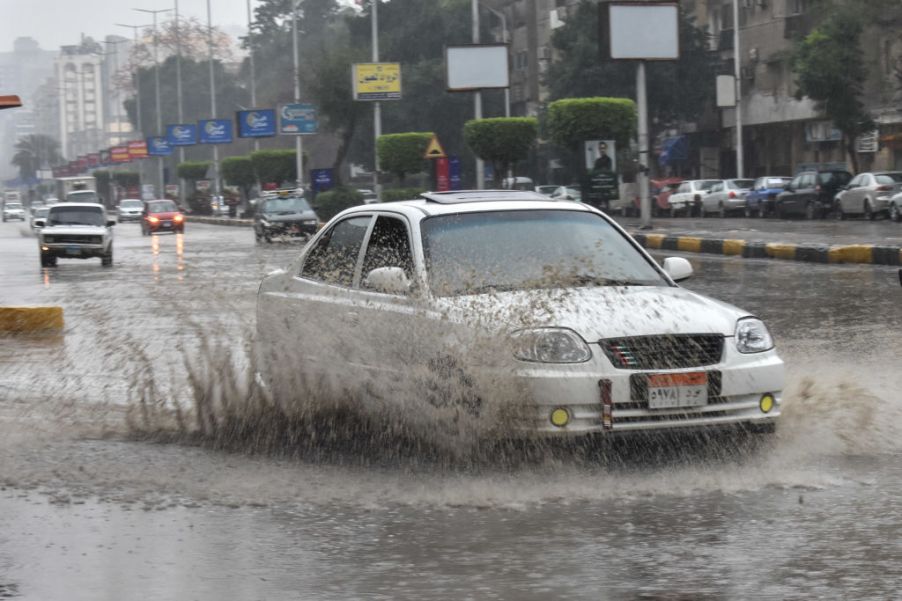
Should You Wash Your Car After It Rains?
Washing your car isn’t actually as simple as it seems. Done improperly, you can risk damaging your paint. And if it’s not done at all, your car may rust sooner than expected. Luckily, it’s easier to tell when your car needs a wash than if your clutch or brakes need replacement. But, cleaning your car involves more than just soap and water. That’s why, even though it seems counter-intuitive, rain alone won’t clean your car.
Rain isn’t entirely clean

Despite what you may think, rainwater isn’t necessarily 100% clean. In fact, the CDC recommends against drinking it without caution. And you can’t substitute rain for a proper wash, Jalopnik explains.
There’s more than just water inside a raindrop, UW-Madison atmospheric scientist Steve Ackerman explains in a Wisconsin State Journal interview. As rain falls, it collects atmospheric pollutants: dust, pollen, soot, rock chips, and so on. These are the water spots you see on vehicles after storms.
In fact, Dr. Kenneth Rubin of the University of Hawaii explains, these pollutant particles are often what raindrops condense onto in the first place. That’s why the air seems cleaner after a storm: the rain drew pollutants out of the air.
In addition, as Washington University’s Rachel Casiday and Regina Frey explain, even unpolluted rainwater is actually somewhat acidic, thanks to atmospheric CO2. But, in heavily polluted areas, SOx and NOx emissions create acid rain. This is so acidic, it can kill wildlife, pollute rivers, and even erode buildings.
Do you have to wash the car immediately after it rains?
It might be tempting, when you see a water-spot-covered car, just to wipe the dirt and dust away. Especially if your local rain is acidic, leaving the car dirty can actually accelerate corrosion, Jalopnik reports. The left-behind minerals and dirt can also adhere to the paint itself, causing further damage, CarBible reports.
Wiping the water spots does remove the debris, Auto Detail Doctor reports, especially if you use a microfiber rag. Microfiber cloths grab onto and secure dirt, rather than just spread it around, which causes micro-scratches in the paint. Detailing sprays, CarBible reports, can provide additional touch-up help. However, a microfiber can only hold so much dust.
Ultimately, if you have the time and capability, Auto Geek Online forum users recommend washing the car properly.
How often should you clean your car?
Throughout most of the year, Jalopnik reports washing your car or truck roughly every 2 weeks should be sufficient. Regular waxing should be included, both to improve the appearance and add further paint protection.
However, if you live in an area with salted roads, you should be washing more regularly to prevent corrosion. In those scenarios, you ideally should wash your vehicle right after it stops snowing or raining, temperature-permitting. At the very least, wash it on the first non-freezing day.
Fortunately, much of the damage rain can do to your car takes time (hail storms aside). And modern automotive paints aren’t as delicate as they once were. So, if you can’t drop everything to clean your vehicle after a brief shower, it won’t be the end of the world.
Follow more updates from MotorBiscuit on our Facebook page.


